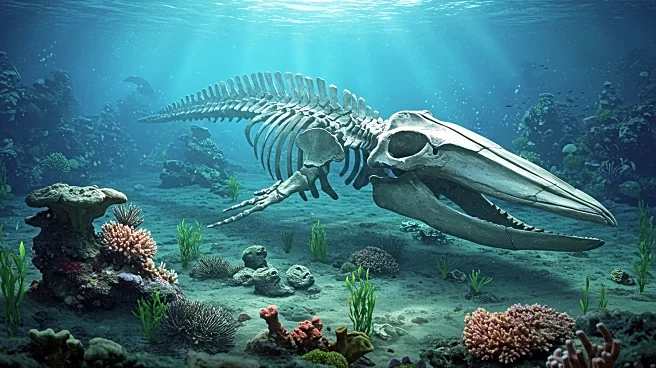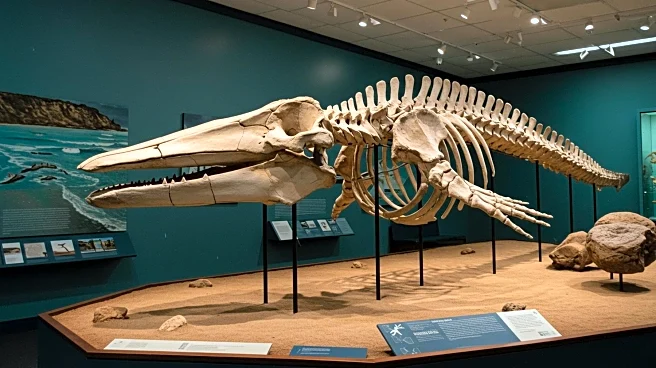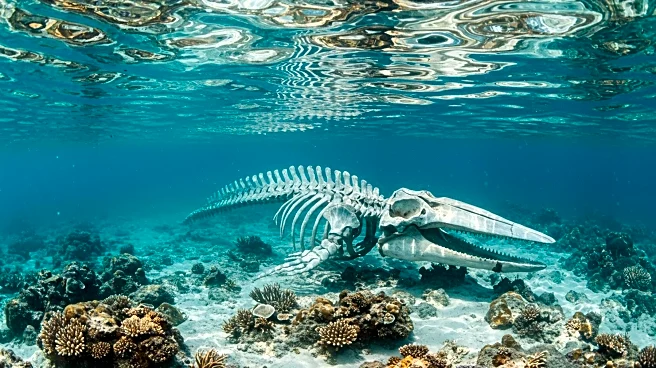What's Happening?
Researchers from the Polish Geological Institute-National Research Institute have discovered fossilized trackways in the Holy Cross Mountains, Poland, attributed to dipnoan fish from the Lower Devonian period. These tracks represent the earliest evidence of vertebrates testing land mobility, predating known tetrapod locomotion by approximately 10 million years. The study, published in Scientific Reports, analyzed trace fossils and 3D scans to interpret the locomotion and snout anchoring of these fish. The findings suggest that dipnoan fish were capable of semi-terrestrial movement, using fins for leverage and snout anchoring in sediment, indicating preadaptation for land invasion.
Why It's Important?
This discovery provides crucial insights into the evolutionary history of vertebrates, highlighting the early adaptations that facilitated the transition from aquatic to terrestrial life. Understanding these adaptations can shed light on the evolutionary processes that led to the development of tetrapods and the colonization of land. The findings also suggest that the origins of quadrupedalism may be traced to even older geological formations, prompting further exploration and study in paleontology. This research contributes to the broader understanding of vertebrate evolution and the complex interactions between organisms and their environments.
Beyond the Headlines
The study reveals potential evidence of handedness among vertebrates, with a significant number of traces showing a left-turning preference. This could indicate early behavioral adaptations and cognitive development in vertebrates. Additionally, the research underscores the importance of preserving fossil sites and employing advanced techniques like 3D scanning to uncover and analyze ancient biological activity. These methods enhance the accuracy and depth of paleontological studies, offering new perspectives on the evolutionary timeline.











